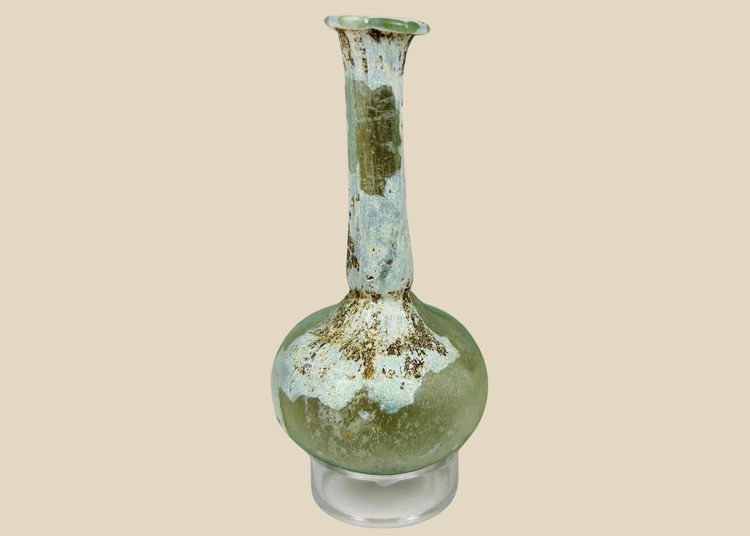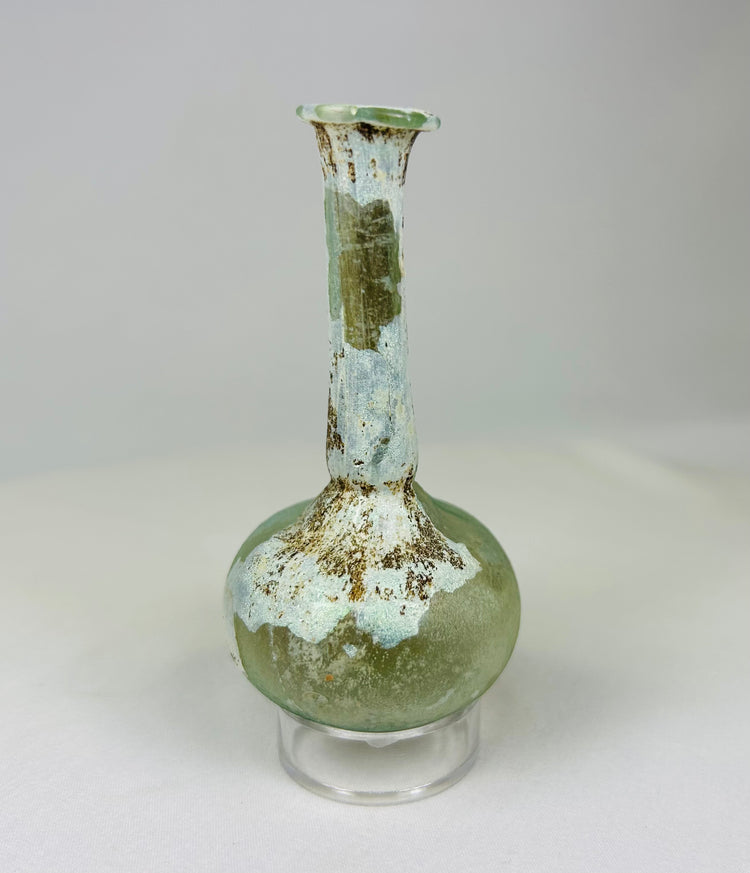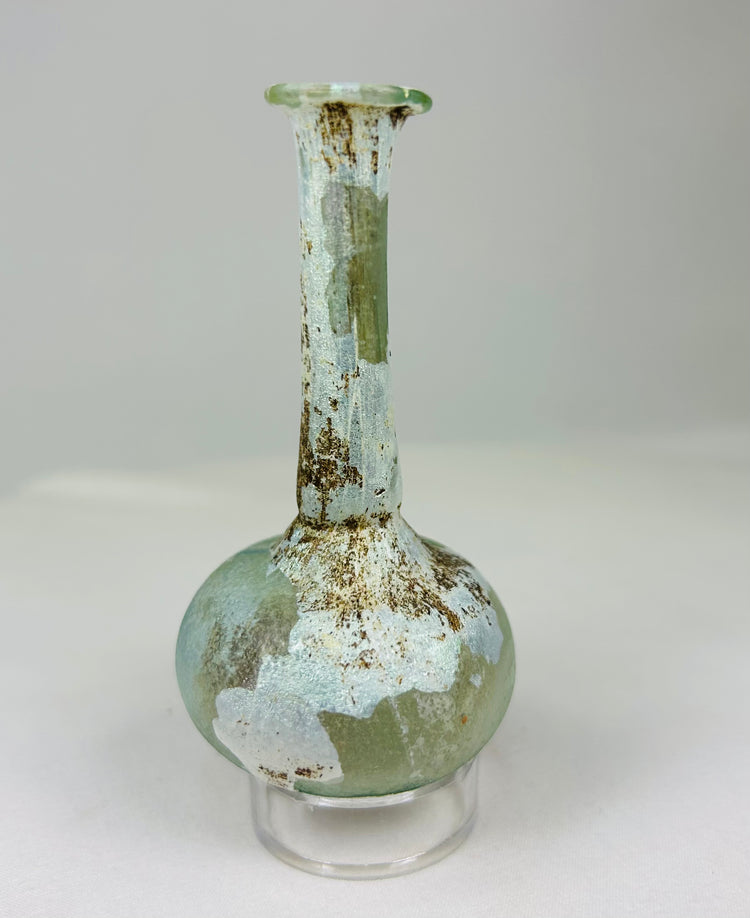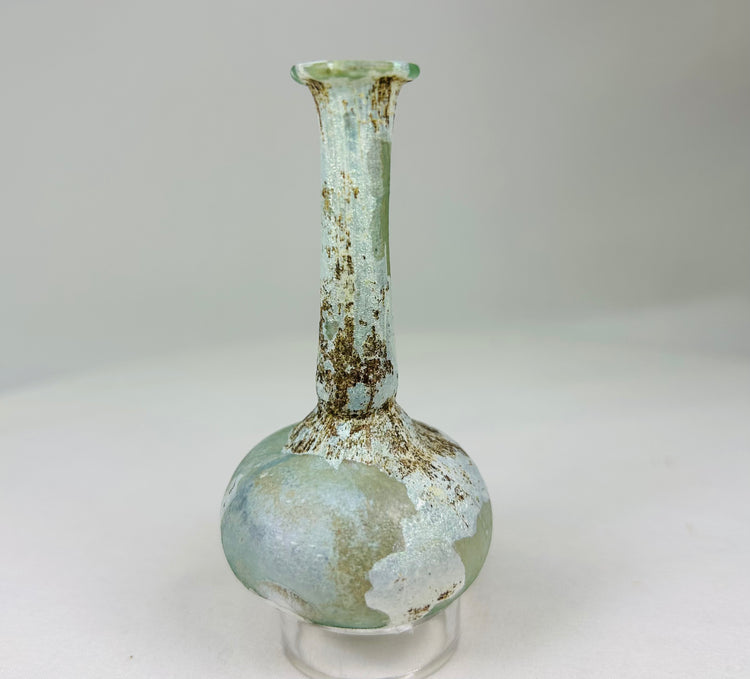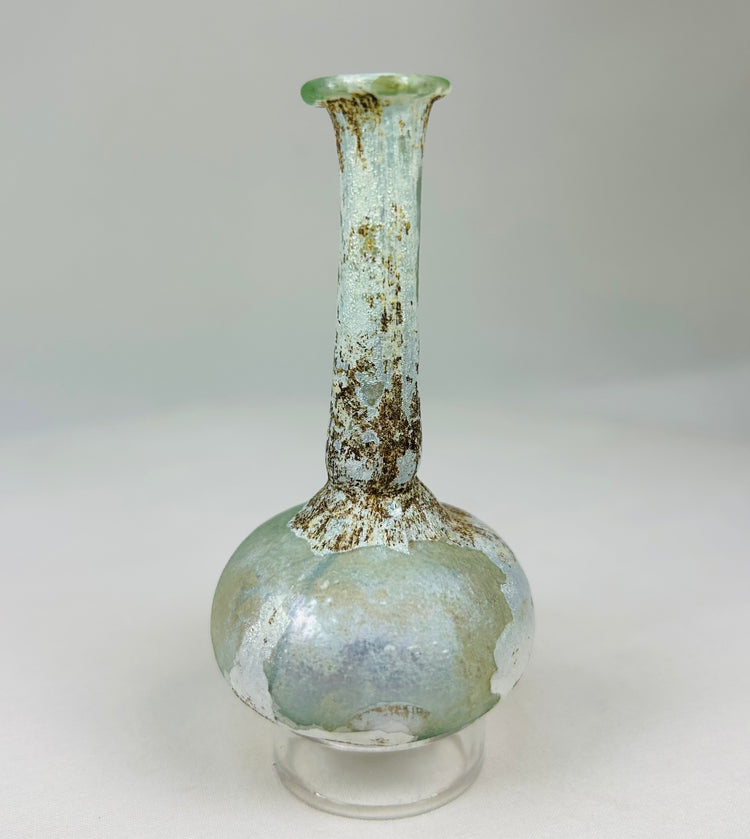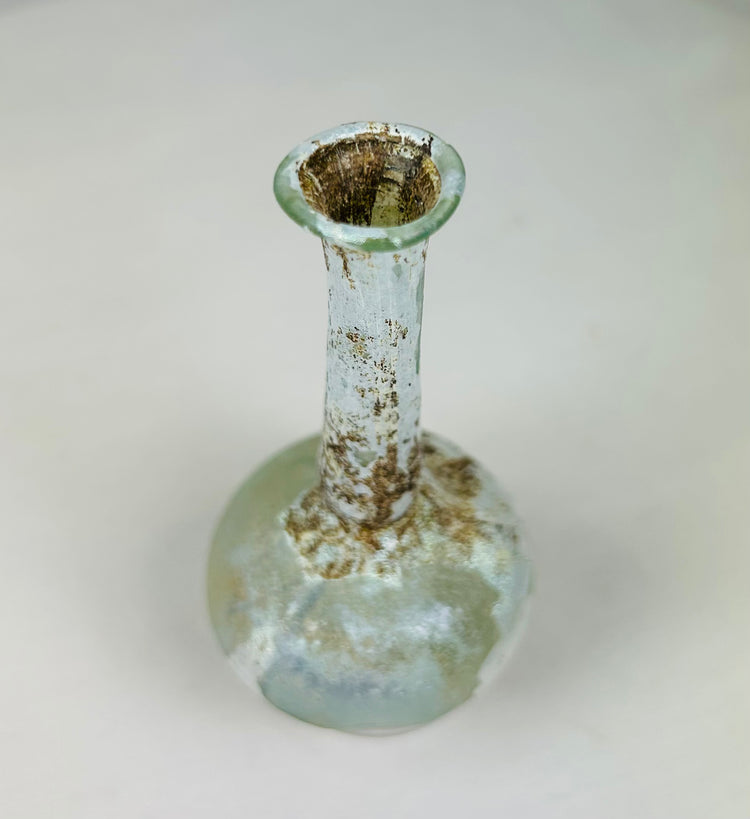Roman Glass Bottle | Pale Green Patina | Circa 1st–3rd Century AD
Description
Plus
Moins
Historical Context & Origin
Region: Eastern Mediterranean
Material: Glass with natural iridescent patina
Period: Circa 1st–3rd Century AD
Description
A delicate Roman glass bottle with a rounded body, elongated neck, and flared rim. Formed using the free-blown glass technique, this vessel displays a mesmerizing pale green hue accentuated by mineral deposits and surface iridescence—a testament to nearly two millennia of burial. Once used to store perfumes or oils, such bottles were both functional and decorative, prized for their translucent beauty.
Features
- Elegant globular form with narrow neck and flared lip
- Distinct weathering with shimmering iridescence
- Free-blown glass construction typical of early Roman craftsmanship
Cultural Significance
In Roman daily life, glass vessels like this one reflected luxury and innovation. The ability to create transparent, lightweight containers transformed trade and domestic life across the empire. Their aesthetic simplicity and enduring resilience continue to captivate collectors today.
Condition
Excellent preservation with areas of mineral encrustation and surface iridescence. No visible repairs or restorations.
Dimensions
Height: 3.5 in
Width: 2 in
Age
Circa 1st–3rd Century AD
Learn More
For further insight into the artistry and innovation of Roman glassmaking, explore the following:
Roman Mold-Blown Glass — The Metropolitan Museum of Art
A scholarly essay examining how the invention of glass-blowing revolutionized Roman craftsmanship, leading to mold-blown vessels of remarkable beauty and precision.
Description
Historical Context & Origin
Region: Eastern Mediterranean
Material: Glass with natural iridescent patina
Period: Circa 1st–3rd Century AD
Description
A delicate Roman glass bottle with a rounded body, elongated neck, and flared rim. Formed using the free-blown glass technique, this vessel displays a mesmerizing pale green hue accentuated by mineral deposits and surface iridescence—a testament to nearly two millennia of burial. Once used to store perfumes or oils, such bottles were both functional and decorative, prized for their translucent beauty.
Features
- Elegant globular form with narrow neck and flared lip
- Distinct weathering with shimmering iridescence
- Free-blown glass construction typical of early Roman craftsmanship
Cultural Significance
In Roman daily life, glass vessels like this one reflected luxury and innovation. The ability to create transparent, lightweight containers transformed trade and domestic life across the empire. Their aesthetic simplicity and enduring resilience continue to captivate collectors today.
Condition
Excellent preservation with areas of mineral encrustation and surface iridescence. No visible repairs or restorations.
Dimensions
Height: 3.5 in
Width: 2 in
Age
Circa 1st–3rd Century AD
Learn More
For further insight into the artistry and innovation of Roman glassmaking, explore the following:
Roman Mold-Blown Glass — The Metropolitan Museum of Art
A scholarly essay examining how the invention of glass-blowing revolutionized Roman craftsmanship, leading to mold-blown vessels of remarkable beauty and precision.
Vous aimerez peut-être aussi




















